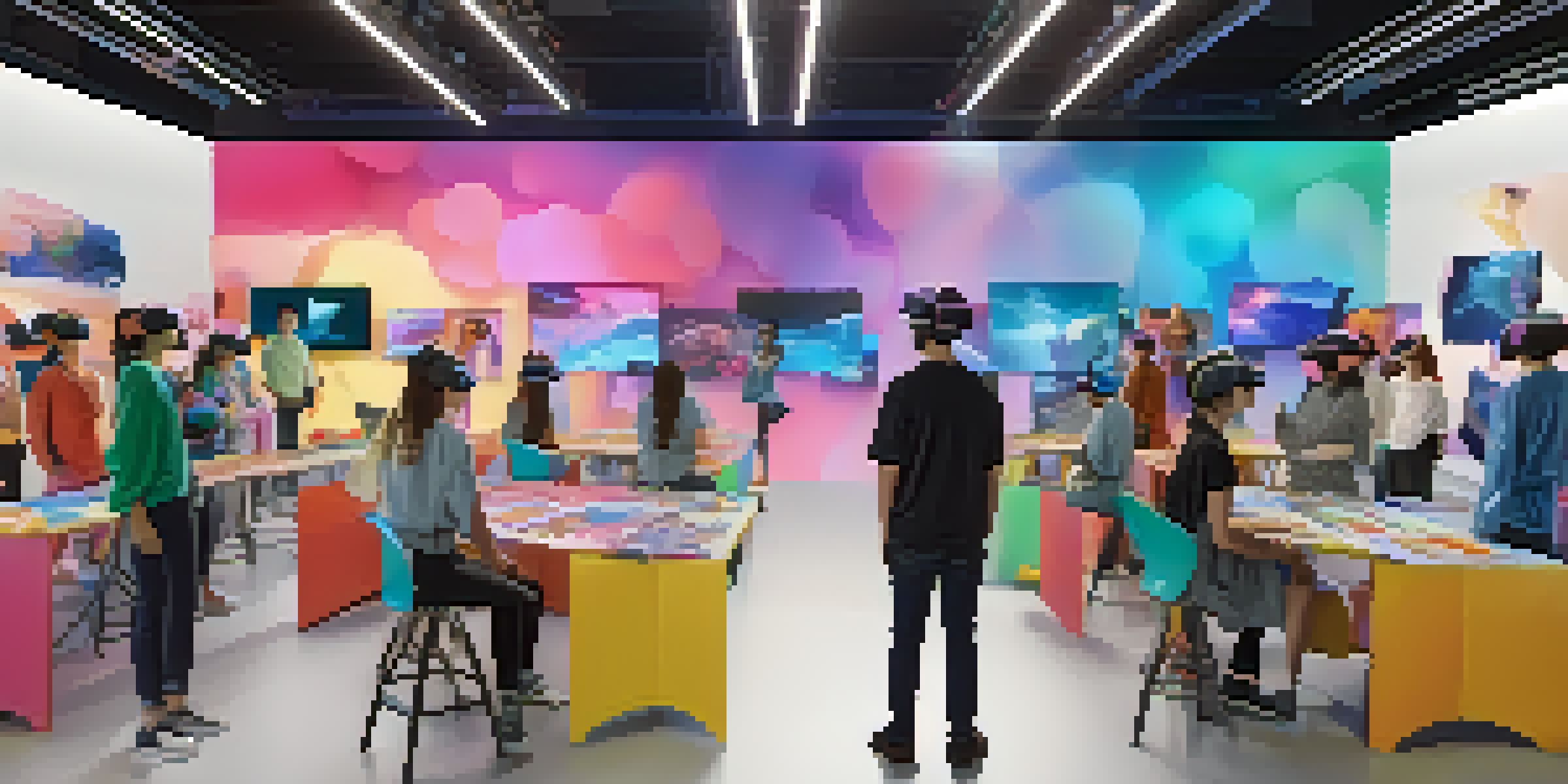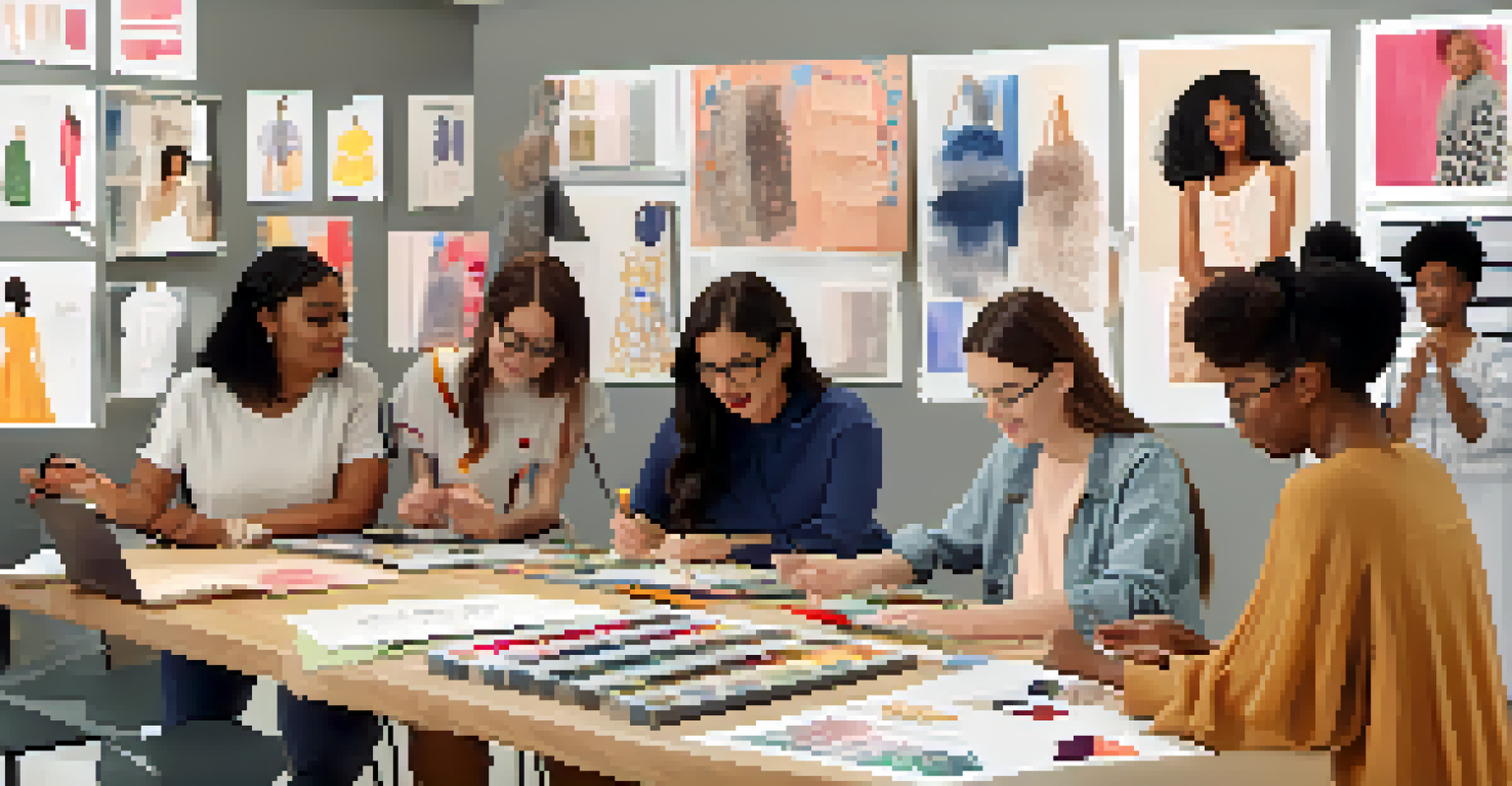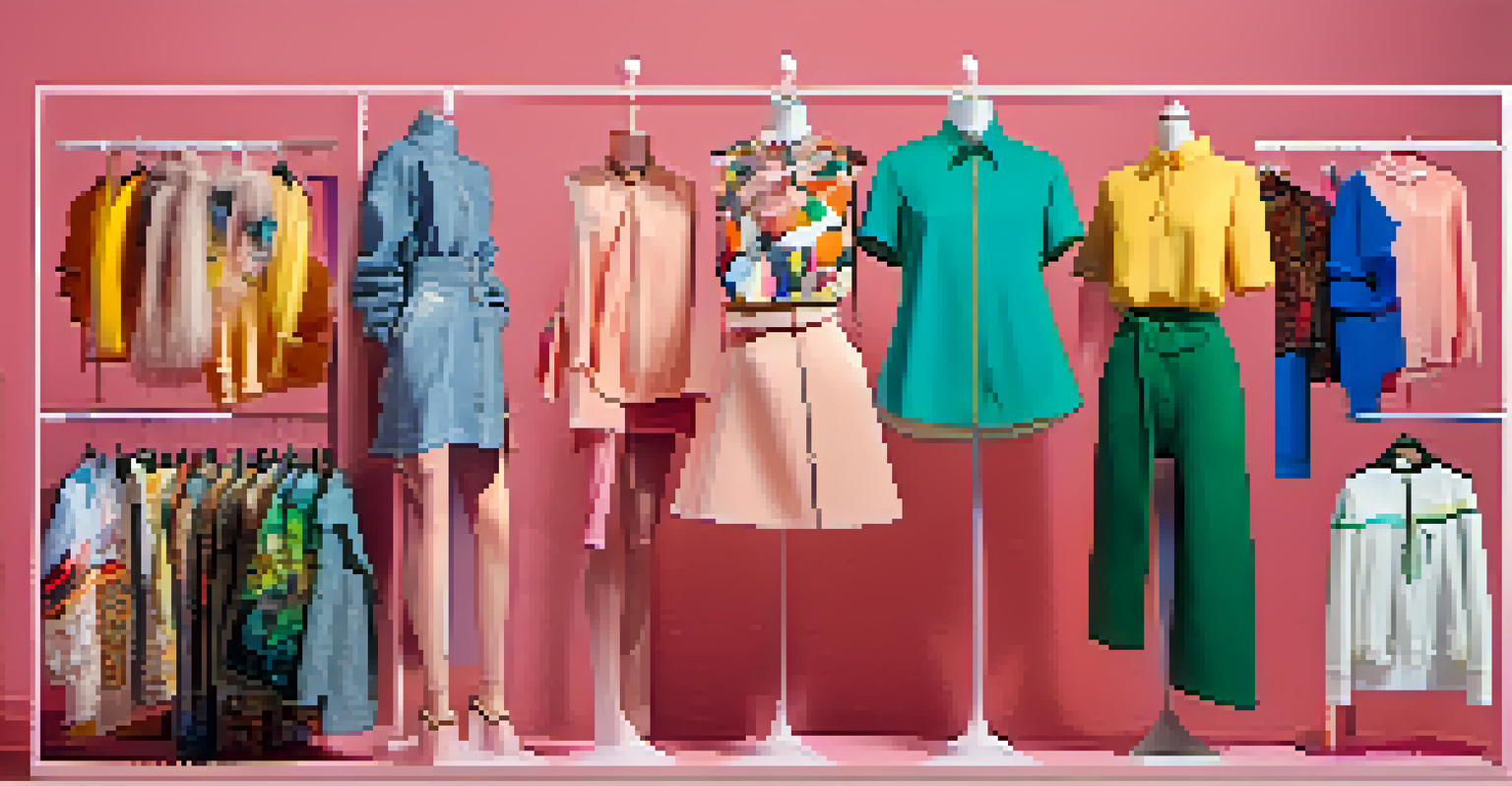Bridging the Gap: Digital Tools for Fashion Education Access

The Shift to Online Fashion Education Platforms
The fashion industry has experienced a significant shift toward online education, making learning more accessible than ever. With platforms like Coursera and Skillshare, aspiring designers can dive into courses from industry experts without geographical limitations. This democratization of education means that students from various backgrounds can gain essential skills and knowledge, regardless of their location.
Education is the most powerful weapon which you can use to change the world.
Moreover, these online platforms often offer flexible schedules, allowing students to learn at their own pace. This flexibility is crucial for individuals who may be juggling jobs or family commitments while pursuing their fashion education. By breaking down traditional barriers, online education has opened doors for many who might not have had the opportunity otherwise.
Additionally, the range of courses available is vast, covering everything from basic sewing techniques to advanced fashion marketing strategies. This variety ensures that learners can tailor their educational journey to align with their personal interests and career aspirations, ultimately bridging the gap between passion and profession in the fashion world.
Virtual Reality: A New Dimension in Learning
Virtual reality (VR) is emerging as a groundbreaking tool in fashion education, creating immersive learning experiences. Imagine stepping into a virtual classroom where you can interact with 3D models of garments or practice runway presentations in a simulated environment. VR offers a unique way for students to engage with fashion concepts that were previously restricted to physical spaces.

This technology not only enhances creativity but also allows students to visualize their designs in real-time. For example, a budding designer can see how fabric behaves under different lighting conditions or how a garment moves with a model. Such hands-on experiences are invaluable, especially in an industry where visual aesthetics are paramount.
Online Learning Makes Fashion Accessible
The shift to online education platforms democratizes fashion learning, allowing individuals from diverse backgrounds to gain essential skills without geographical barriers.
Furthermore, as VR technology becomes more accessible and affordable, its integration into fashion education is expected to grow. Institutions that embrace VR can attract a new generation of students eager for innovative learning methods, thereby transforming the traditional educational landscape.
The Role of Social Media in Fashion Learning
Social media platforms like Instagram and TikTok have become vital resources for fashion education, providing a space for learning and inspiration. Aspiring designers can follow industry professionals, access tutorials, and stay updated on the latest trends, all from their mobile devices. This level of accessibility allows for a more informal and engaging learning experience.
The beautiful thing about learning is that no one can take it away from you.
Moreover, social media fosters community and collaboration among students and professionals alike. Platforms enable learners to share their work, seek feedback, and connect with peers across the globe. This sense of community can motivate students to refine their skills and push their creative boundaries.
Additionally, social media serves as a real-time portfolio for emerging designers. By showcasing their creations online, students can gain visibility and potentially attract job offers or collaborations, proving that learning in the digital age is as much about networking as it is about education.
Online Workshops: Bridging Gaps in Skill Acquisition
Online workshops are becoming increasingly popular in fashion education, providing learners with hands-on experience from the comfort of their homes. These interactive sessions allow participants to engage directly with instructors, ask questions, and receive immediate feedback on their work. This dynamic setup fosters a more personalized learning environment.
Many workshops also cater to specific skill sets, such as pattern making or textile design, enabling students to hone in on their areas of interest. This targeted approach not only enhances skill acquisition but also empowers students to build confidence in their abilities. By participating in these workshops, learners can see tangible improvements in their craft.
VR Enhances Fashion Education Experience
Virtual reality technology creates immersive learning environments, enabling students to visualize designs and practice skills in innovative ways.
Furthermore, the convenience of online workshops means that opportunities are no longer limited by location. Learners can access world-class instructors and specialized knowledge without needing to travel, truly bridging the gap in fashion education accessibility.
E-Learning Communities: Fostering Peer Support
E-learning communities play a crucial role in supporting fashion students by providing a platform for interaction and collaboration. These online spaces enable learners to connect, share insights, and exchange ideas, creating a sense of belonging. This peer support system is especially important in the fashion industry, where collaboration often leads to innovation.
In these communities, students can participate in discussions, join group projects, and even collaborate on fashion shows, simulating real-world experiences. Such interactions not only enhance learning but also prepare students for future teamwork in their careers. It's a reminder that education doesn't happen in isolation; it's a communal journey.
Additionally, having a network of peers can boost motivation and accountability. When students see others achieving their goals, it inspires them to push forward, creating a positive feedback loop that enhances the learning experience.
The Importance of Accessible Resources
Access to resources is a fundamental aspect of fashion education, and digital tools are making this more achievable. From e-books to online databases, students can find a wealth of information at their fingertips. This ease of access allows them to conduct research, study design history, and explore various fashion topics without the constraints of traditional libraries.
Moreover, many educational institutions are starting to offer free or low-cost resources to ensure that all students, regardless of their financial situation, can benefit from high-quality materials. This commitment to accessibility is essential in cultivating a diverse and inclusive fashion community.
Social Media Fosters Fashion Community
Social media platforms serve as vital resources for aspiring designers, offering inspiration, networking opportunities, and a space for collaboration.
As a result, students are better equipped to explore their creativity and develop their unique voices in the fashion industry. With the right resources, they can transform their ideas into reality, leading to innovation that reflects a broader spectrum of experiences and backgrounds.
Future Trends: The Evolution of Fashion Education
As technology continues to advance, the future of fashion education is poised for further evolution. Emerging tools like artificial intelligence (AI) and machine learning are beginning to shape how students learn and interact with fashion concepts. For instance, AI can provide personalized learning paths, adapting to each student's unique strengths and weaknesses.
Additionally, the rise of augmented reality (AR) offers exciting possibilities for immersive design experiences, allowing students to visualize their creations in real-world settings. These trends point to a future where education is not only more interactive but also more tailored to individual needs, making learning more effective and enjoyable.

Ultimately, as digital tools become more integrated into fashion education, the industry will benefit from a new generation of designers equipped with innovative skills and diverse perspectives. This transformation underscores the importance of bridging the gap in education, ensuring that everyone has the opportunity to contribute to the ever-evolving world of fashion.